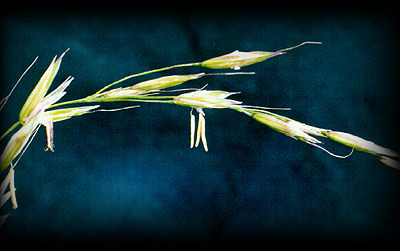
In
flowering plants, how does the male gamete reach the female gamete?
First the pollen must reach a part of the flower called the stigma. The transfer of pollen from anther to stigma is called pollination.
Many plants with brightly coloured flowers depend on insects carrying out pollination. We have all seen bees busily visiting flowers and collecting pollen in those "baskets" on their knees; some of this pollen gets brushed off on the bee's visit to the next flower, so ensuring pollination.
..... but what about grass flowers? They are so insignificant that insects are not attracted to them.
Move the mouse over the picture and notice the anthers. These are the parts of the stamen which produce pollen.
In all flowering plants, each pollen grain carries a male sex cell. In order that sexual reproduction can take place, the male sex cell needs to fertilise a female sex cell. In flowering plants the female sex cell is found in an ovule, situated in the ovary. (Sex cells are known as gametes.)
Most of us would have no difficulty in naming grass pollen as one of the major causes of hayfever, but how many of us know what a grass flower which produces this pollen actually looks like?
Next time you are out, take a bit more notice of those grass stems. Look a bit closer .....
